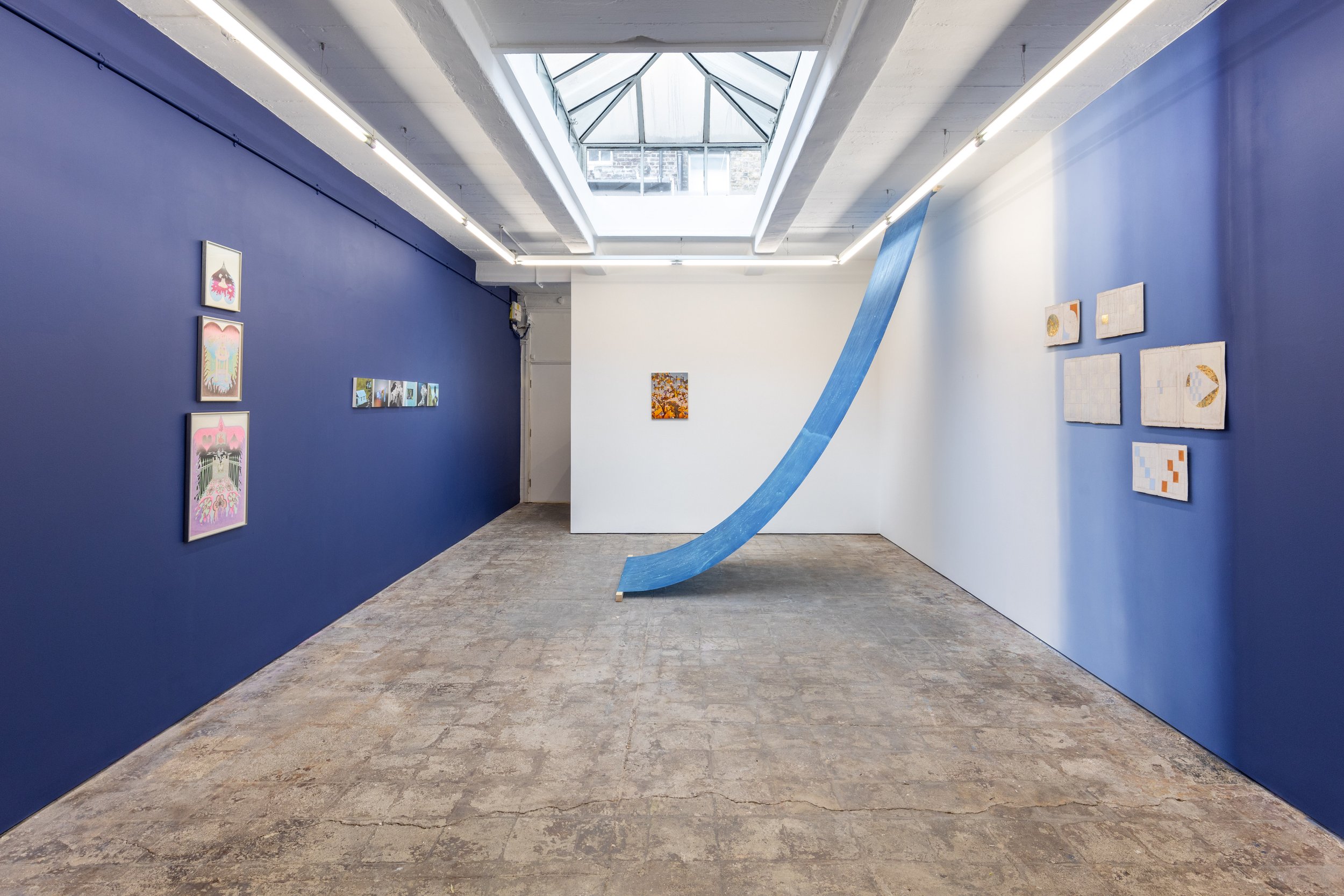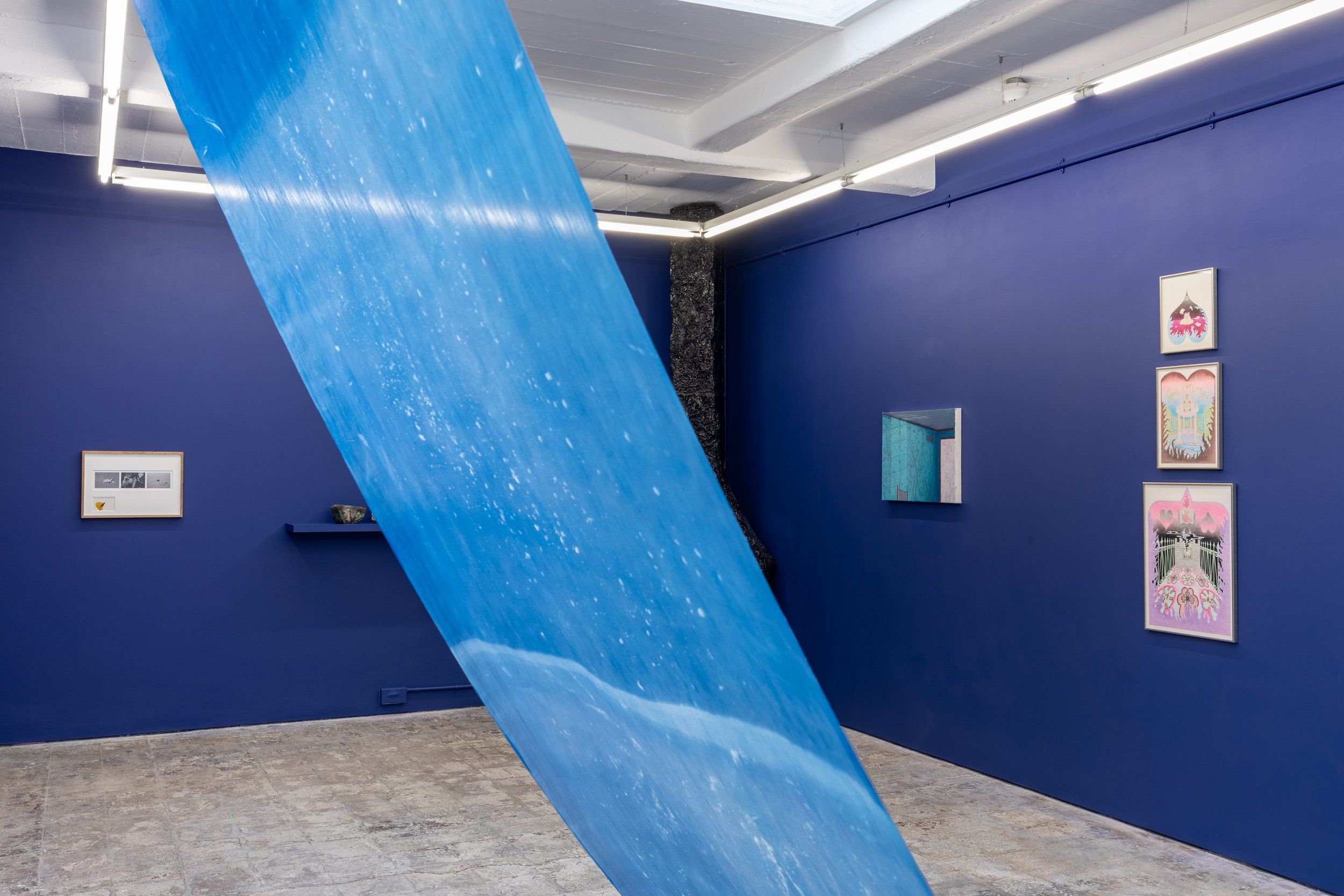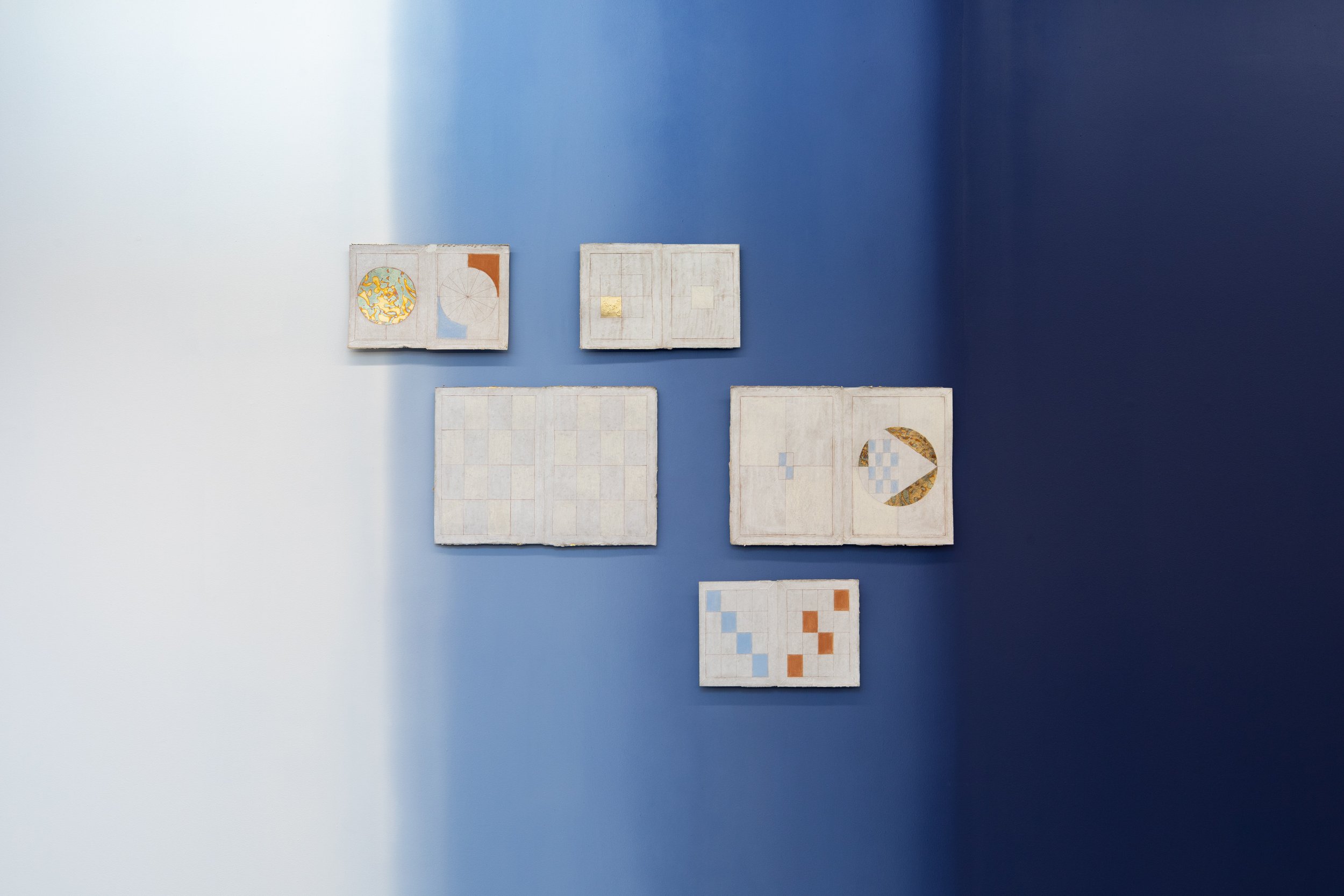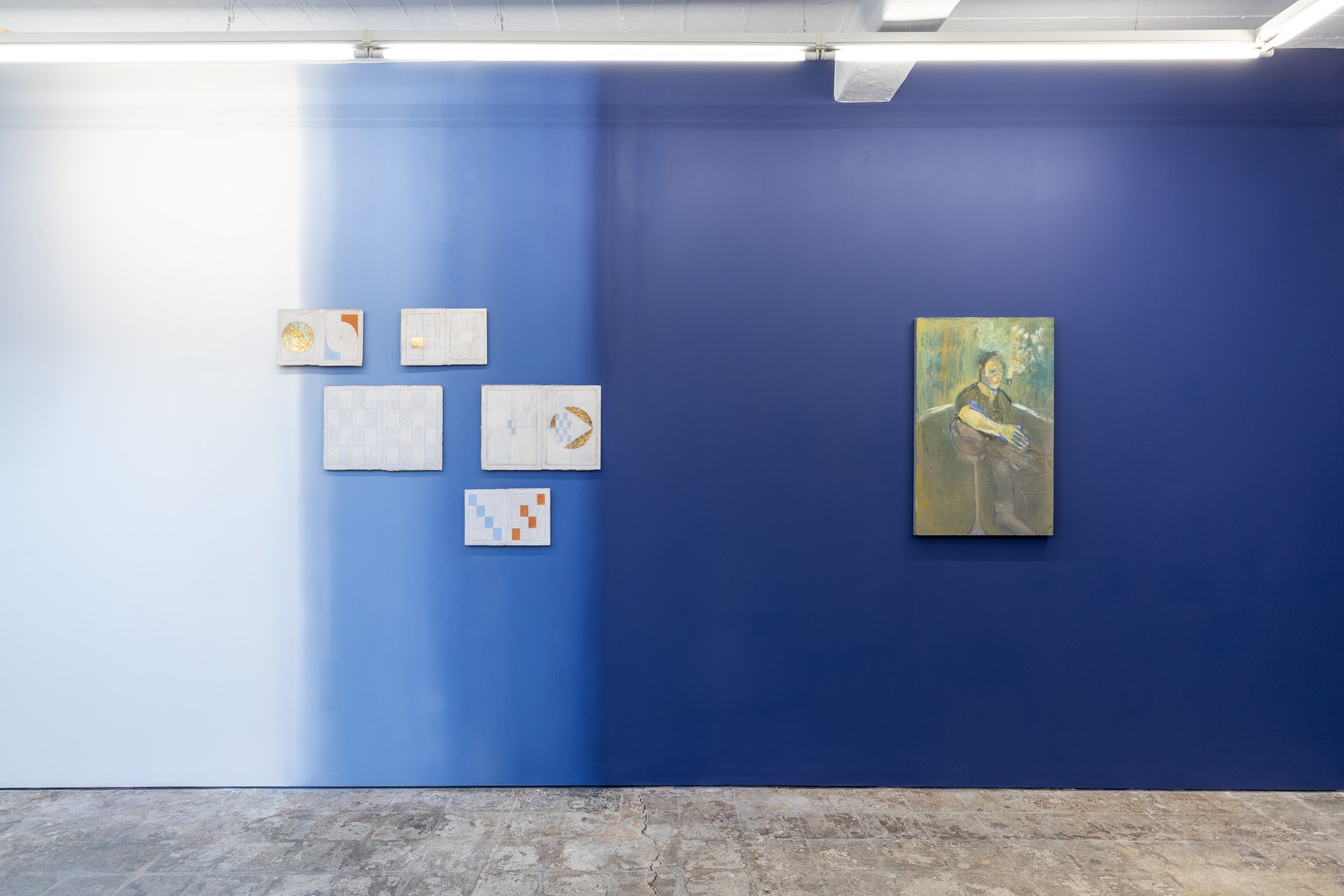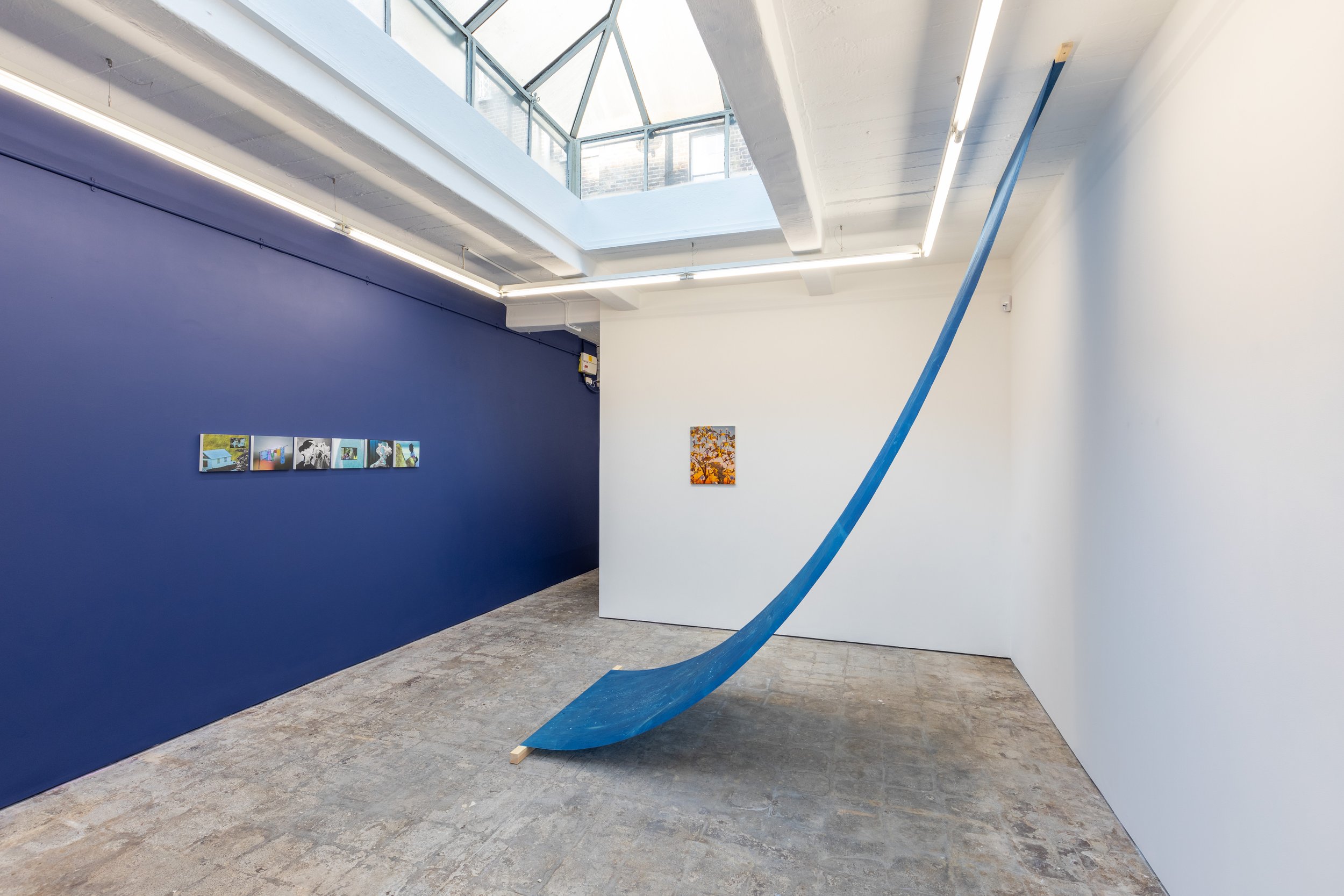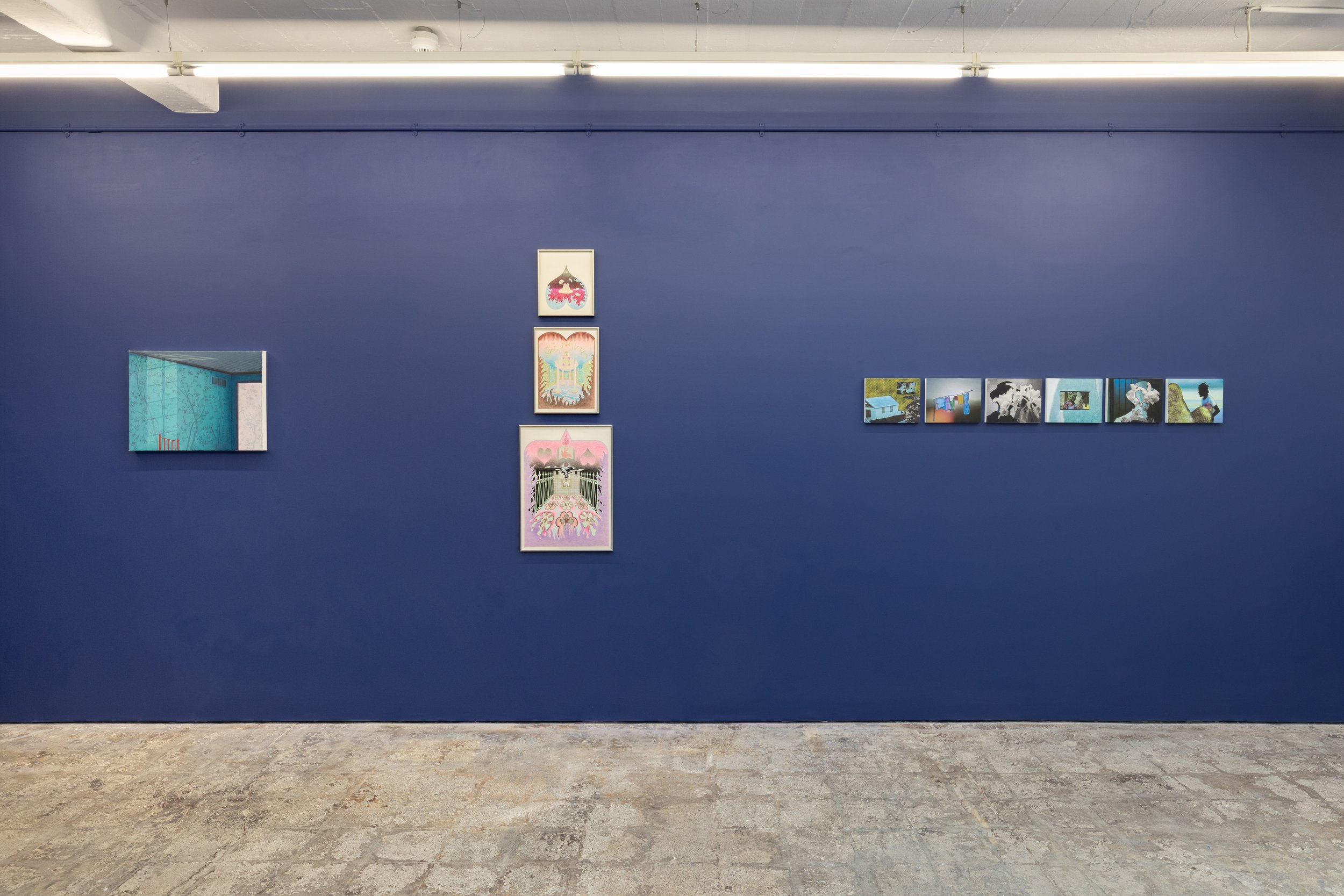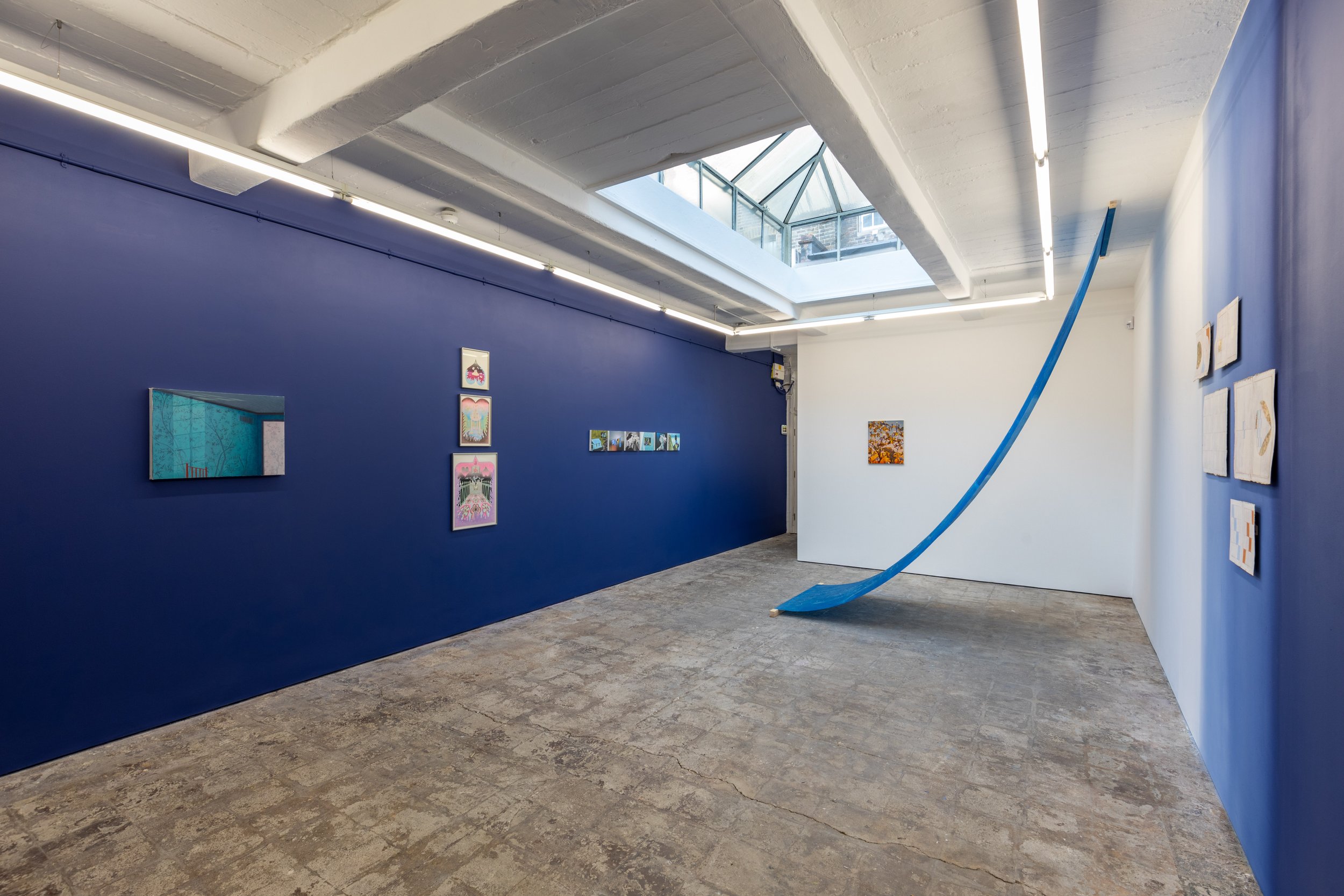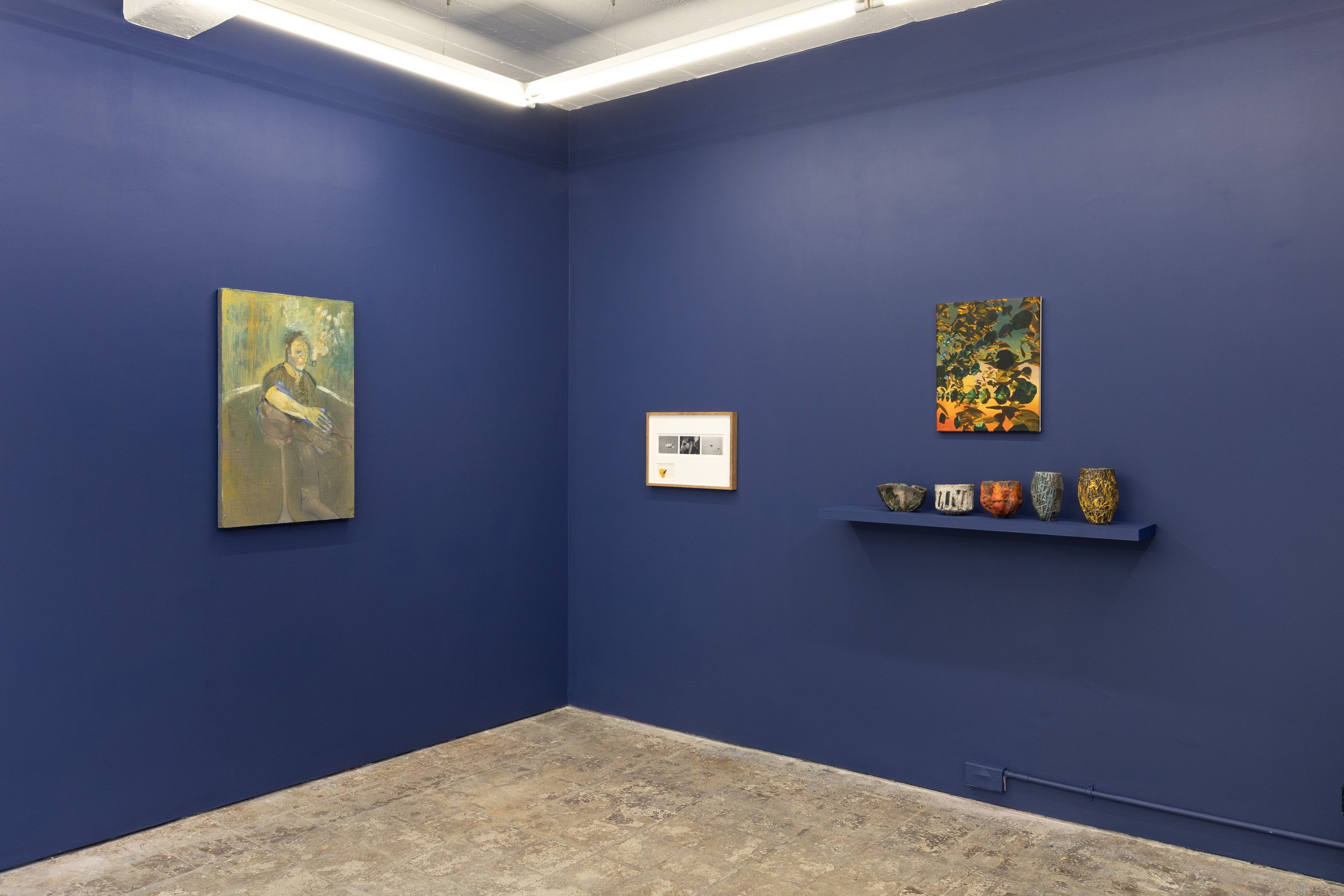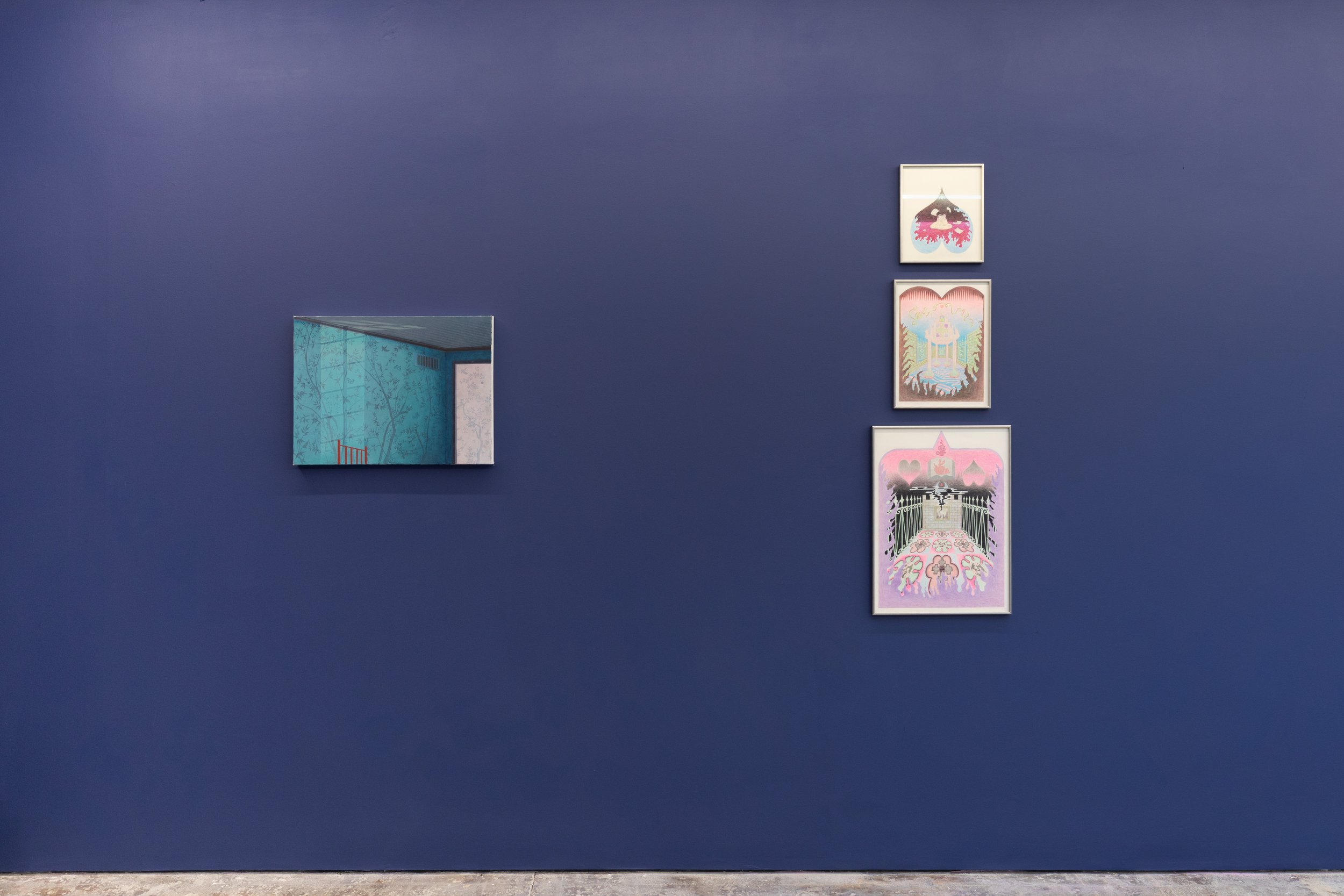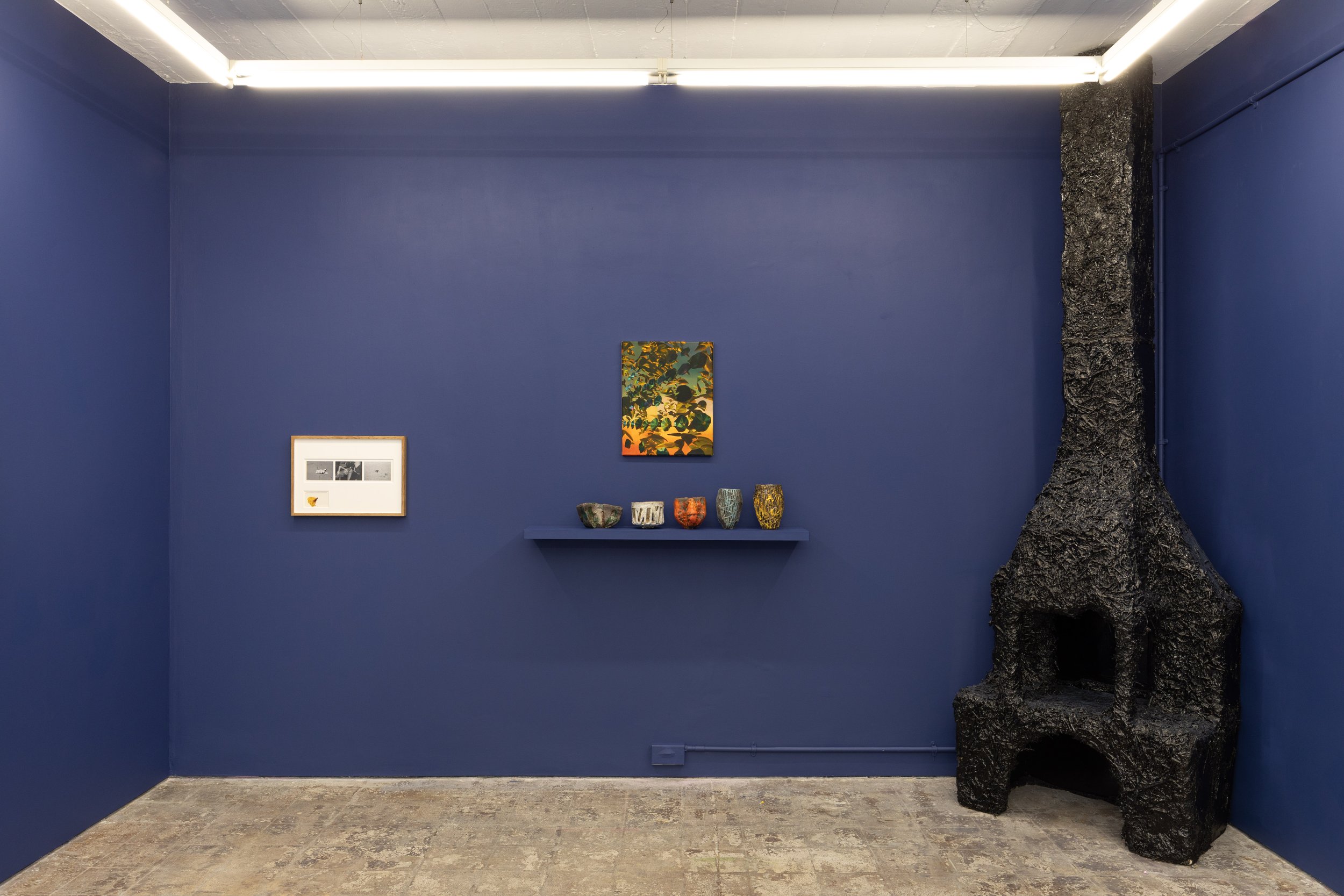“These are the small hours. Returning again to this moment furthest from the sun, we have seen these long shadows before. Catching us in liminal light, the apex of orbit holds in its pause the flicker of a pilot light. We remember this jolt awake from dream by an idea revealing itself impatiently before dawn…” - Jane McCabe
ALICE BLACK is delighted to present ‘Small Hours’ which will preview at the gallery’s London space in Fitzrovia on Thursday 30 November (6 - 8pm). Bringing together works by Vincent Black, Tom Bull, Dante Elsner, Jazz Grant, Nicholas William Johnson, Jane McCabe, Gitte Maria Möller, Aliya Orr, Amber Pinkerton and Atalanta Xanthe, this exhibition constellates a field for solstitial contemplation.
Vincent Black (b. 1975) studied at Byam Shaw School of Art. He lives and works in London, UK. Black’s work portrays deeply personal emotions as he takes the viewer into hazy, constructed worlds of solitary figures and vast, enigmatic landscapes. Working between thick impasto and thinly veiled layers of oil paint, the viewer is transported into an ambiguous world of self-reflection.
Tom Bull (b. 1995) studied MFA Fine Art at Goldsmiths University. He lives and works in London, UK. Bull's sculptures attempt to capture the uncanny and unsettling lived experience of our current troubling times. Employing a wide range of tools and materials borrowed from architecture, model making, craft, farming and forestry, Bull’s sculptural practice confronts and manipulates traditions, time periods, lore and genre. His most recent works interrogate country life by confronting issues around land and labour.
Dante Elsner (1920 - 1997) was born in Kraków, Poland in 1920 and died in London in 1997. Elsner’s life as an artist cannot be separated from the turmoil of the 20th century in central Europe. In many ways it represents a series of personal responses; as a Holocaust survivor and a man of intense spiritual convictions, to the unsettling upheavals of his time. In both his painting and his pottery, Elsner prized above all else the qualities of spontaneity and honesty in relation to form, line and colour. His pottery was decisively inspired by the Japanese Raku technique that had been developed to make the tea bowls. Raku allows the artist to fire a pot individually, first withdrawing it from the kiln (at about 1000 degrees centigrade) to then directly control the chemical reactions that affect the glaze.
Jazz Grant (b. 1992) lives and works between London and Margate, UK. Grant’s practice is centred on non-digital collage artwork and stop animation. Grant’s source images span from Jamaican film stills and archival documentary footage to found books in the Yorkshire countryside, alongside her personal archive. Drawn to the egalitarian accessibility of collage as well as the opportunity to catalogue intentions within the medium, Grant considers the mutability of the image itself. Unifying different realities, fictions, and memories which loom larger than the remembered, Grant’s works present an ongoing narrative of a familiar and distorted aestheticization of home.
Nicholas William Johnson (b. 1982) interrogates botanical form as a vehicle for enquiry into perceptions of consciousness. By first constructing images in a 3D virtual environment, Johnson investigates repetitive iteration and fractal forms digitally before re-presenting them in the form of hand painted oil on canvas. In the tradition of painting, the virtual modelling in Johnson’s methodology becomes a contemporary camera obscura. An ongoing investigation in re-presentation, Johnson’s painting probes a link inextricable from the perpetual mechanics of plant form and human form alike. This thesis aligns with critical theory which recognizes a ‘non-human turn’ in the post-Anthropocene, as well as philosophical idealism.
Jane McCabe (b. 1993) is a conceptual artist making photo objects, sculpture, and video projections concerning the compulsion to record in relation to mortality and experiential time. In an ongoing series, cyanotype photograms on silk of her father’s ashes are sensitised at night and printed in daylight. This embodied photographing demands a methodology which is both intuitive and practical; repetitive and synchronised. The act of scattering is a collaboration between hand, wind and silk, where the climatic conditions leave their mark in deep blue time. In a parallel process, McCabe’s video compositions of screen re-re-recordings capture an entranced pursing through of everyday iPhone footage, blurring the lines of habit and ritual.
Gitte Maria Möller (b. 1991) explores symbolic and numinous possibilities of picture-making through painterly devices in a range of mediums. Referencing religious painting, dream symbology, early video games, online fan art and childhood, Möller’s work holds an array of iconography in suspension. Discarded fragments and disregarded aesthetics are rehabilitated to form a personalized arena for devotion, establishing a union between her inner and outer reality. These intricate visual spaces offer a distracted meditation on a world interpolated by empathy and apathy, freedom and vulnerability, and the struggle between good and evil.
Aliya Orr graduated from the RCA with an MA in Sculpture in 2023 and works across installation, sculpture, performance and drawing, exploring identity, mythology and personal storytelling. Growing up within both the Islamic faith and outsider Sufi communities across various geographies, the unknown is a continuous force in Orr’s work, where belief and its reliance on uncertainty become active methodological principles. Orr’s work examines methods of spectacle and ritual within daily life which allow moments of potential cosmological belonging to take place. These interests shore a practice which confronts emotional and social issues, looking at how ideology, globalization, faith and new media interact to create atmospheres, societal norms and states of mind.
Amber Pinkerton (b. 1997) is a London-based photographic, moving image and conceptual artist born and raised in Kingston, Jamaica. Pinkerton’s practice is rooted in identity politics, with a focus on Jamaica and the diaspora. Through combining analogue and digital printing methods, Pinkerton explores the nature of personhood and individual and collective cultural agency. In recent works, Pinkerton explores the 'photograph as object' in its physical realm, focusing on tactility and materiality in tandem with increasingly autobiographical themes through self-portraiture, virtual reality, sound and the written word.
Atalanta Xanthe (b. 1996) is a world of fantastical surrealism, a beguiling collision of nature and artifice. Her painterly dramas - tantalisingly ambiguous - are a space for free-wheeling and re- imagining. IInfleunced by stagecraft and rooted in drawing, Xanthe teases out her composition and narrative in her practice over the course of many preliminary studies. Knowingly riffing on the canon of art history, her singular stylistic flair and clearly identifiable hand enable Xanthe to vault, jump headlong, sprint or glide effortlessly across the canvas, forming a testament to her love of paint and the purist act of applying pigment to canvas in the name of her story-telling.
